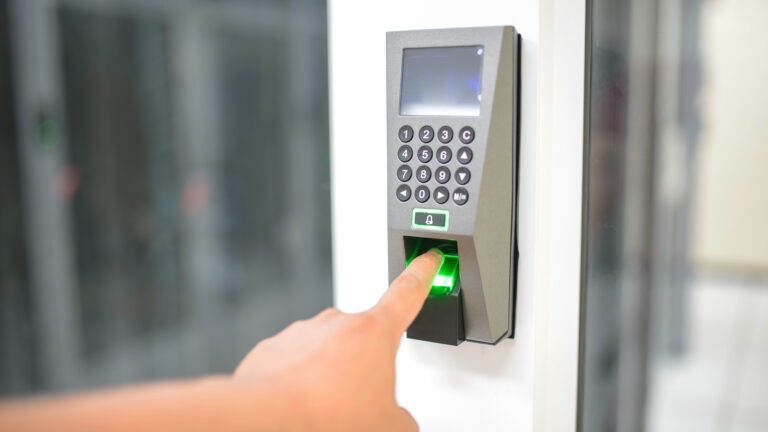With the rapid advancements in technology, access control systems are revolutionizing the way we secure our spaces. Gone are the days of traditional locks and keys; now, intelligent and sophisticated solutions are taking center stage. In this article, we will explore how access control systems are unlocking a new era of security and shaping the future of safeguarding our environments.
The Importance of Access Control Systems
Access control systems provide much more than just a keyless entry system. They offer a comprehensive and integrated approach to security by combining elements such as identification, authentication, and authorization. These systems are designed to ensure only authorized individuals have access to specific areas. By utilizing technologies like biometric authentication and mobile credentials, access control systems provide a higher level of security and accountability.
Types of Access Control Systems
Access control systems can be categorized into several types based on their functionality and deployment. The most common types include:
- Card-Based Systems: These systems use proximity cards or smart cards with embedded chips to grant access. The cards can be easily programmed and reprogrammed to add or revoke access rights, making them flexible and convenient.
- Biometric Systems: These systems rely on unique physical or behavioral characteristics such as fingerprints, iris patterns, or facial recognition to authenticate individuals. Biometric systems offer a high level of security as these characteristics are difficult to forge or replicate.
- Keypad/PIN Systems: Keypad-based systems require users to enter a unique PIN to gain access. While not as secure as biometric systems, keypad systems are cost-effective and easy to manage.
- Mobile-Based Systems: Leveraging the ubiquity of smartphones, mobile-based access control systems use mobile credentials stored in apps to grant access. These systems offer convenience, as users can simply use their smartphones to gain entry.
Key Components of Access Control Systems
To understand how access control systems work, it is essential to familiarize ourselves with their key components. These components work together seamlessly to provide a secure and efficient access control solution. The main components include:
- Credentials: Credentials are used to authenticate individuals and grant access. They can be in the form of cards, biometric data, PINs, or mobile credentials.
- Readers: Readers are devices that detect and read the credentials presented by individuals. These devices can be mounted on doors, turnstiles, or gates, and they communicate with the control panel to determine access rights.
- Control Panels: Control panels are the brain of the access control system. They receive information from the readers, verify credentials, and send signals to unlock or lock doors. Control panels also store access rights and log activities.
- Locking Mechanisms: Locking mechanisms physically secure doors and other entry points. They can include electric strikes, magnetic locks, or motorized locks that are controlled by the control panel.
- Software and Management Systems: Software and management systems allow administrators to manage access rights, monitor activities, generate reports, and perform other administrative tasks. These systems also enable integration with other security measures like video surveillance and alarms.
Benefits of Implementing Access Control Systems
The adoption of access control systems brings numerous benefits to organizations and individuals alike. Here are some key advantages:
- Enhanced Security: Access control systems provide a higher level of security compared to traditional locks and keys. By incorporating features like biometric authentication and mobile credentials, these systems ensure that only authorized individuals can access specific areas. This significantly reduces the risk of unauthorized entry and potential security breaches.
- Improved Accountability: Access control systems create a digital trail of entry and exit events, providing detailed information on who accessed which area and when. This information is invaluable for security audits, investigations, and compliance purposes. It enhances accountability and helps identify any security gaps or irregularities.
- Flexibility and Convenience: Access control systems eliminate the need for physical keys and the hassle of managing them. With the ability to easily grant or revoke access rights, these systems offer flexibility in managing different levels of access for employees, visitors, or contractors. Mobile-based systems, in particular, provide the convenience of using smartphones as access credentials.
- Efficiency and Cost Savings: Access control systems streamline security operations by automating tasks like unlocking and locking doors, managing access rights, and generating reports. This reduces the reliance on manual processes, saving time and resources. Additionally, the scalability of access control systems makes them cost-effective, as they can easily adapt to growing security needs.
- Integration Capabilities: Access control systems can integrate with other security measures such as video surveillance, alarms, and visitor management systems. This integration creates a comprehensive security ecosystem, enhancing overall protection and enabling a centralized management approach.
Access Control System Installation Process
Implementing an access control system requires careful planning and execution to ensure its effectiveness. The installation process typically involves the following steps:
- Risk Assessment: Conduct a thorough assessment of the space to identify potential security risks, vulnerabilities, and areas that require access control.
- System Design: Based on the assessment, design a system that meets the specific security requirements of the space. Consider factors like the number of entry points, types of credentials, and integration with other security systems.
- Hardware Installation: Install the necessary hardware components, including readers, control panels, locking mechanisms, and wiring infrastructure. Ensure proper placement and connectivity for optimal functionality.
- Credential Enrollment: Enroll individuals into the access control system by assigning them appropriate credentials. This can include issuing proximity cards, registering biometric data, or setting up mobile credentials.
- System Configuration: Configure the access control system’s software and management system according to the desired access rights, security levels, and administrative settings.
- Testing and Training: Thoroughly test the system to ensure all components are functioning correctly. Provide training to system administrators and end-users on how to operate the access control system effectively and securely.
Common Challenges and Solutions in Access Control System Implementation
While implementing access control systems can greatly enhance security, there are some common challenges that organizations may face. Here are a few challenges and their corresponding solutions:
- Integration Complexity: Integrating access control systems with existing security measures can be complex. To overcome this, organizations should work with experienced vendors who can provide seamless integration solutions and ensure compatibility between different systems.
- User Resistance: Some individuals may resist the transition from traditional locks and keys to access control systems. Proper user education and training can help overcome this resistance and ensure smooth adoption.
- System Scalability: As organizations grow or change, their security needs may evolve. It is crucial to choose an access control system that is scalable and can easily adapt to changing requirements. Regular system reviews and updates are essential to maintain optimal security.
- Technical Issues: Like any technological solution, access control systems may encounter technical issues from time to time. Having a reliable support system in place can help address these issues promptly and minimize downtime.
Innovations and Trends in Access Control Systems
Access control systems continue to evolve, incorporating new technologies and trends to enhance security and convenience. Here are some notable innovations and trends in the field:
- Cloud-Based Access Control: Cloud-based access control systems allow for remote management and monitoring, providing flexibility and scalability. Organizations can access their systems from anywhere, making it easier to manage multiple locations.
- Artificial Intelligence and Machine Learning: AI and machine learning technologies are being utilized to enhance the accuracy and efficiency of access control systems. Facial recognition algorithms, for example, can continuously learn and improve their recognition capabilities.
- Mobile Credentials and NFC: The use of mobile credentials stored in smartphone apps is becoming increasingly popular. Near Field Communication (NFC) technology allows smartphones to communicate with readers, making access control more convenient and user-friendly.
- Integration with IoT Devices: Access control systems can now integrate with Internet of Things (IoT) devices, such as smart locks, sensors, and surveillance cameras. This integration creates a connected security ecosystem, providing a holistic approach to security management.
Integrating Access Control Systems with Other Security Measures
While access control systems are powerful on their own, integrating them with other security measures can further enhance overall protection. Here are some key integration possibilities:
- Video Surveillance: Integrating access control systems with video surveillance allows for real-time monitoring and recording of access events. This integration provides visual evidence and improves response times in case of security incidents.
- Intrusion Detection Systems: By integrating access control systems with intrusion detection systems, organizations can create a comprehensive security framework. Unauthorized access attempts can trigger alarms, alerting security personnel and enabling swift action.
- Visitor Management Systems: Access control systems can be integrated with visitor management systems to streamline the visitor registration process. This integration ensures that visitors are granted access only to authorized areas and enhances overall security for both employees and visitors.
- Security Operations Center (SOC): Access control systems can feed real-time data to a centralized SOC, where security personnel can monitor and analyze access patterns, identify potential threats, and respond proactively.
Harnessing the Power of Access Control Systems for a Safer Future
As technology continues to advance, access control systems are becoming an integral part of our security infrastructure. They offer a comprehensive and integrated approach to security, combining authentication, authorization, and monitoring functions. By embracing access control systems, organizations can achieve enhanced security, accountability, and convenience.
As we move forward, it is essential to stay informed about the latest trends and best practices in access control system implementation. By harnessing the power of access control systems, we can unlock a future where our spaces are secure, efficient, and future-proofed.


